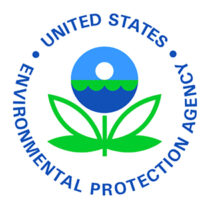WASHINGTON – Today, March 21, 2024, the U.S. Environmental Protection Agency released its 2022 Toxics Release Inventory (TRI) National Analysis showing that environmental releases of TRI chemicals from facilities covered by the program were 21% lower in 2022 compared to 2013. This includes a 26% decrease in air releases. During this 10-year period, releases from manufacturing facilities decreased by 9% while the value added to the U.S. economy from manufacturing increased by 14%. While overall releases increased by 1% from 2021 to 2022, there was a 6.5% increase in the number of pollution prevention activities reported under the TRI program compared to 2021.
The 2022 TRI National Analysis summarizes environmental releases of TRI chemicals, as well as how facilities managed their waste. In 2022, facilities reported managing 88.5% of their TRI chemical waste through preferred practices such as recycling, energy recovery and treatment, while releasing 11.5% of their TRI chemical waste into the environment.
“Communities have a right to know how facilities in their backyards might be exposing them to toxic chemicals,” said Assistant Administrator for the Office of Chemical Safety and Pollution Prevention Michal Freedhoff. “We are committed to sharing the information we collect from facilities openly and clearly, allowing people to find new ways to use this data to the benefit of us all.”
EPA, states and Tribes receive TRI data from facilities in sectors such as manufacturing, mining, hazardous waste management and electric utilities. More than 21,000 facilities submitted reports on 522 of the 827 chemicals and chemical categories for which TRI reporting is required. The remaining 305 chemicals either were not manufactured, processed or used by facilities required to report to TRI or were not manufactured, processed or used in amounts large enough to trigger reporting.
The 2022 TRI National Analysis features visualizations and analytical tools to make data more useful and accessible to communities. Readers can view data by state, Tribe, metropolitan area, EPA region and watershed using the “Where You Live” mapping tool. This tool also allows readers to view facility locations overlayed with demographic data to identify potential exposure to TRI chemical releases in communities, including overburdened communities. Community groups, policymakers and other stakeholders can use this information, along with other environmental data, to better understand which communities may be experiencing a disproportionate pollution burden and take action at the local level.
Additionally, the 2022 TRI National Analysis highlights trends and changes in waste management practices for specific sectors and chemicals in the Sector Profile and Chemical Profile sections. This year, the 2022 TRI National Analysis highlights the primary metals manufacturing sector alongside the standard profiles for electric utilities, chemical manufacturing and metal mining.





